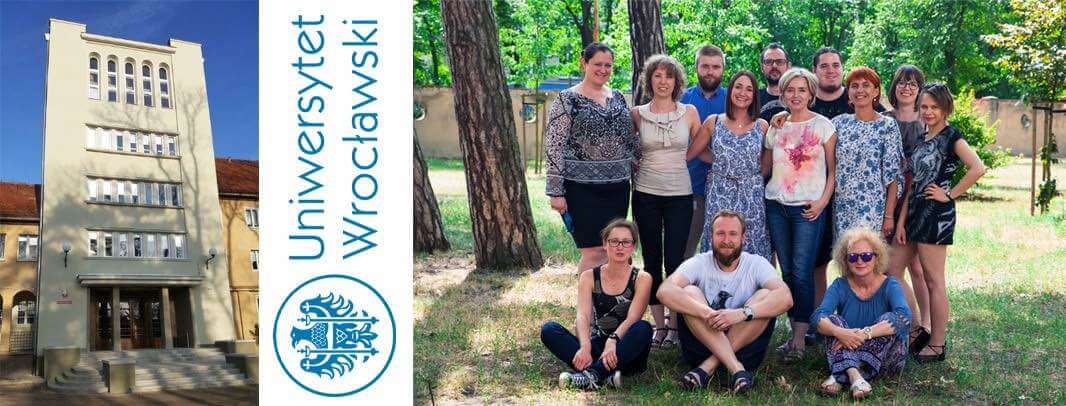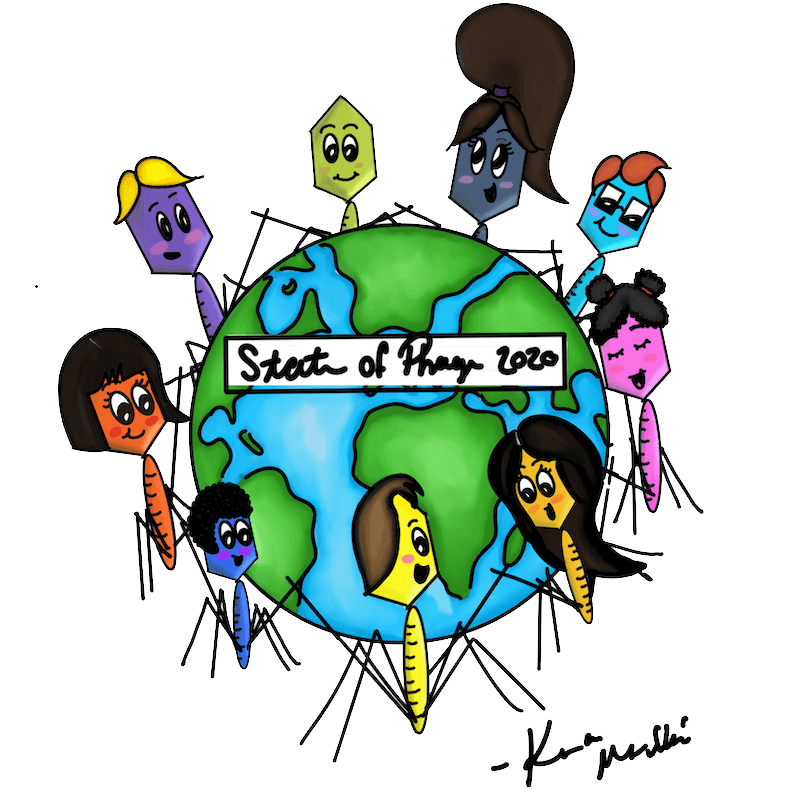For this week’s feature article, Rodrigo Monteiro and Graça Pinto, graduate students in the Azeredo lab at the University of Minho, interviewed University of Wroclaw Professor Zuzanna Drulis-Kawa about her research into phage therapy and phage depolymerase enzymes, as well as her experience hosting the Viruses of Microbes 2018 conference.
Rodrigo: Can you start by telling us a little about your background and current research interests?
Zuzanna: I’m a clinical microbiologist and started working in a clinical lab at the Korczak Children’s Hospital. Then I moved to the University of Wroclaw, to work in the microbiology department. At this point, I was thinking of alternative therapies against multidrug-resistant Klebsiella pneumoniae and Pseudomonas aeruginosa, because they were commonly isolated from clinical samples recovered from infected kids.
My first project was focused on liposomes for the encapsulation of drugs to overcome the resistance of Pseudomonas, which is based on the low permeability of bacterial outer membranes, as I was also looking for plant compounds as alternative antimicrobials. At the same time, I moved to studying phages because our hospital used to collaborate with the phage therapy center at the Hirszfeld Institute to treat Staphylococcus aureus infections in kids. This gave me the idea to apply phages against Klebsiella and Pseudomonas. I attended the Viruses of Microbes meeting in Belgium in 2012, where I was amazed by the potential of phage enzyme applications, which led me to include this area in my research. Now I’m intensively working, among other things, on phage depolymerases, which can degrade bacterial capsule that is considered a major virulence factor protecting bacteria against the immune system.
R: You are coordinating different projects, can you tell us, which was the most challenging one, and why?
Z: When you prepare a project to get funding you think that the problem is simple and when you write the project everything is so clear and straightforward, but, after starting the project, you realize that going further it becomes more complex as there are more problems to solve. Each project is completely different because in each one I have new challenges. From the laboratory point of view, I need to develop new methods in a particular area.
The last project that I’ve been working on, about phage resistance that emerges in bacterial treated cultures, is very challenging. Usually, the concept of “resistance” is seen as an adverse effect in therapy, similarly to drug resistance, thus it is assumed as something bad. In my understanding, the “resistance” is not necessarily a negative feature, for example, the phage resistance that is developed in treated bacterial cells typically causes specific changes in the population, making it more susceptible to the immune system. This happens because most of the common receptors for phages are important bacterial surface structures serving as molecular patterns for recognition by the innate immune system. When bacteria are trying to escape phage infection, it changes their receptors, which can be glycans, capsule, or lipopolysaccharides, thus becoming visible to the immune system and more sensitive to innate host defense mechanisms such as the lytic complement activity and phagocytosis. This way, we can see a positive effect of this phage resistance — the immune system will defeat the infection easily.
R: Do you think phage-derived enzymes have more potential than the use of the phages themselves? Why?
Z: Phages are considered by the authorities as something not genetically stable and can evolve during the propagation on the host, thus it’s difficult to obtain a final product that is precisely characterized, with all pharmacokinetics and pharmacodynamics determined. When you compare it to a protein product, it’s easier to have a recombinant protein product well-defined and prepared, since the implementation will follow the same procedures as conventional drugs.
R: What is missing for phage therapy to become widespread in the EU?
Z: I think phage products should undergo other regulations than common drugs, and that’s why we consider it as an experimental therapy. Phages can propagate at the site of infection, they can also induce the immune response, and, because they are viruses, we can expect phagocytosis and clearance from the blood circulation in a faster way than proteins.
I see huge progress in keeping people and society informed about phage therapy as a possible alternative to the standard antibiotic treatment. Scientists and companies are doing a great job in this regard. In my opinion, more patients suffering from infection problems will push authorities to change regulation/legislation issues. The pressure from the community can and will have an impact on the use of this type of therapy, that’s why it is important that more people know about this type of solution. For example, the interview for Capsid & Tail is a good idea, letting more people know more about the problem and possible solutions, showing that we already have tools available.
R: You have been awarded different research funds in the last years, and recently you managed a project to understand the effect of phage therapy on bacteria. Can you tell us what you accomplished and the main conclusions you made with this study?
Z: I was recently awarded two grants, one about phage resistance developed during lytic phage application, and the other is focused on Klebsiella depolymerases. On the latter, we want to discover as much as possible about those enzymes, especially the activity, domain composition, and the crystal structures, to elucidate what elements are responsible for the specificity of those enzymes. We verified their potential as anti-virulent agents in combination with drugs or phages lacking virion-associated enzymes to eradicate biofilms.
R: You were involved in a European Cooperation in Science and Technology (COST) project in 2010 — how was the experience?
Z: The COST Action, which lasted 4 years, gathered scientific experts from 20 countries, including chemistry and microbiology experts, clinicians, and structural biologists. During these meetings, we exchanged knowledge from different angles, with the focus on microbial virulence factors to look for new therapeutics for cystic fibrosis especially. At that time, phages in therapy were not yet well known, and I introduced the idea of using phages in those meetings. Thanks to this initiative, I am able to collaborate today with many experts, to write successful grant proposals, to organize conferences and meetings, as well as facilitate exchanges among young scientists.
R: You hosted Viruses of Microbes (VoM) 2018 — how was it, and did it meet your expectations? What’s the most challenging part of the organization of such an important event?
Z: I was really excited about the opportunity to organize this meeting, especially after four VoM meetings had already been organized. The most challenging part was the budget, of course. Krystyna Dabrowska from the Hirszfeld Institute and me as main organizers were not sure how many participants would register in the end. Thus, the estimated budget was uncertain. It is worth mentioning that we had to extend the registration time to attract more participants. Finally, we got more and more people willing to participate, even declaring their interest on the days of the meeting. We had to rent an extra room to make the main hall less crowded. Eventually, more than 500 participants took part in the VoM 2018 meeting. Then, we were worried about the logistical issues regarding the poster session and catering to make it work smoothly. Overall though, the meeting was very successful and we received very positive feedback both as personal comments as well as in participants’ questionnaires.
R: This year, you’ve been involved again in VoM 2020, this time by being part of the scientific committee — what are your expectations for this conference, which has been postponed to 2021?
Z: There are several differences between the previous VoM meetings. First, the COVID-19 situation is still in our minds, affecting our everyday life and our jobs. It will influence our behavior, style of interactions, and research interests. On the other hand, we all are missing direct in-person meetings to be able to talk, interact, and discuss in a traditional way. We hope that the conditions change and maybe people, despite their fear of close interactions, will want to attend anyway. Another issue will be if the flights are canceled; I think this is one of the most important things. Secondly, there are more and more new groups starting to work on phages and viruses of microbes in general, thus we hope the attendance will be high, attracting people from all over the world.
Z: This is a great idea! I congratulate all of you that are involved and took this initiative to make it happen. I think this is really great because it increases the visibility of our society, making more people aware of how important microbial viruses are, both in ecology and application aspects, for example, to fight and control the MDR infections commonly seen as the consequence/secondary infection after COVID-19 as well.
On the other hand, those permanent webinars allow people to know more about the different activities that are going on in our field and about the most recent research. Moreover, we are usually overwhelmed with the growing number of published papers, and the webinar series will present the interests of different PIs and research groups, which helps to find potential collaborations. I think this is a very good initiative. Furthermore, more research groups are starting to work with phages, so you can attract them to join the future conferences as well, which is a good way to use the internet and those streaming social networks to reach more people.
Further reading
Want to learn more about the career paths and science of other invited VoM 2020 speakers like this one? Check out the interview Rodrigo and Graça did with Dr. Evelien Adriaenssens earlier this year.
This issue was produced in collaboration with the Viruses of Microbes 2020 Organizing Committee. The conference, originally planned for July 2020, will be postponed to July 2021.
This article was kindly edited by Lizzie Richardson, our volunteer guest editor. Thanks Lizzie!







